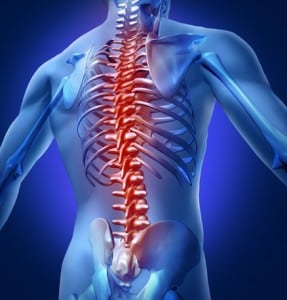
Spinal implants work exceptionally well to fuse your spine or correct spinal deformities. Some of the conditions that often respond well to implants include:
- Spondylolisthesis or slippage of your spine
- Chronic degenerative disc disease
- Traumatic fracture
- Scoliosis
Innovative Hardware
Scientists and surgeons continue to improve patient outcomes through the use of spine implants. There are several types of spinal implants that spine doctors and surgeons typically recommend:
- Rods
- Pedicle screws
- Hooks
- Plates
- Cages
New and innovative ways to use these implants are constantly being developed. One of the biggest advances involves using hooks, rods and screws together to correct spinal deformities three-dimensionally. Plates and cages have been specially developed to promote bone fusion.
And implants have been developed that are small enough to use in children and strong enough to withstand the wear and tear of kids being kids. These spinal implants are made of:
- Titanium
- A titanium alloy
- Stainless steel
- Non-metallic compounds
Looking Toward the Future
The future of spine implants is the development of bioresorbable models. They’re designed to serve the same purposes as traditional implants, such as helping to promote fusion, but unlike traditional implants that are crafted to withstand the test of time, the bioresorbable versions are intended to break down over time.
These implants are designed to decrease in size over a 12 to 36-month period. This includes an initial reduction of 50 percent after the first year. The decrease continues until your implant is completely absorbed. Basically, these newer versions only stick around long enough to ensure successful fusion.
Keeping a Low Profile
Choosing the right medical practice is as important as choosing the best treatment. You need spine specialists, such as your team at the Southeastern Spine Institute (SSI). They’re committed to finding the right implant that will work for your individual needs.
For example, many people don’t want an implant that’s easy to notice through your skin. If you’re petite or have a slim build, your spinal doctors may opt for a low-profile implant. They also have an arsenal of low-volume implants that can significantly reduce post-operative pain and muscle irritation.
Caring for You as an Individual
The past 20 years have seen amazing advances in the field of implants. And the ground-breaking progress continues at SSI. The goal for you is lasting pain relief and less downtime. Spinal surgery isn’t the end of the world. The right medical professionals can ease your pain and restore quality to your life.
To ensure lasting success with your spine implants, insist on proper implementation and attention to your specific needs. If you’re living with back pain, implants may be a viable option. Consultation is the first step toward long-term rewards. Ask if this treatment option is right for you.
